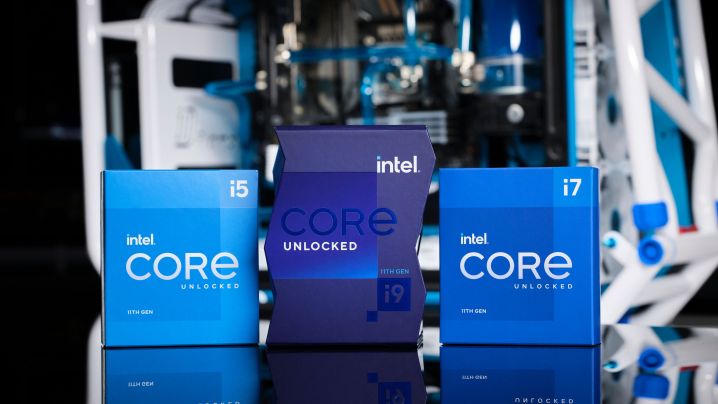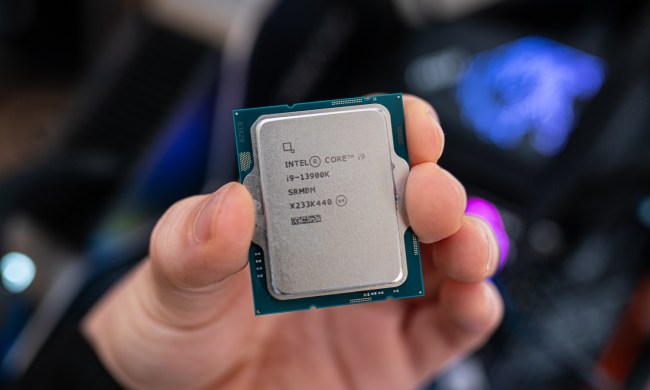Intel and AMD CPUs are more competitive today than they have been in more than a decade, making it a great time to upgrade if you can find any of the new-generation chips in stock. Intel’s 11th-generation Rocket Lake CPUs raised the bar for single-threaded performance once again, making the battle for the midrange hotter than ever.
The Intel Core i5 11600K and AMD Ryzen 5 5600X are set to be the two best-bang-for-your-buck gaming CPUs for their generation, but which one is truly the best?
Pricing and availability

The AMD Ryzen 5 5600X debuted alongside the more capable 5800X, 5900X, and 5950X, with a retail price of $299. Due to shortages, the price in early 2021 is more typically around $350. Availability is improving throughout 2021, so it’s unlikely that we’ll see these chips disappear entirely again in the near future.
The Intel Core i5-11600K is set to go on sale on March 30 — though is available to pre-order now. Its MSRP was just $262, though it is currently available for $293. That’s still significantly cheaper than you can buy a 5600X, but closer than was initially expected.
Specs and performance

One of the best ways to get a rough idea of how two processors compare is to take a look at their specifications. Since both chips have six cores and 12 threads, there isn’t a whole lot to differentiate them, but there are some notable standout specs that are worth taking a closer look at.
| Intel Core i5-11600K | AMD Ryzen 5 5600X | |
| Process node | 14nm | 7nm |
| Architecture | Cypress Cove | Zen 3 |
| Cores/Threads | 6/12 | 6/12 |
| Base clock | 3.9GHz | 3.7GHz |
| Maximum Boost Clock (All core) | 4.9GHz (4.6GHz) | 4.6GHz (4.2GHz+) |
| Integrated graphics | Intel Xe UHD 750 | N/A |
| TDP | 125W | 65W |
Clock speed can be king in some applications and games, and with the big instructions per clock (IPC) gain of Rocket Lake — Intel claims up to 19 percent thanks to its backported Ice Lake architecture, even if that’s in ideal circumstances — having a near 5GHz boost clock could be a winner for the 11600K. That said, its 4.6Ghz all core is down 200MHz from the last generation, and the 5600X is no slouch. Though it’s unlikely to hit over 4.5GHz all-core in every application, it has a high IPC of its own that vastly outstripped the previous generation, Intel 10600K, so it could be a close fight.
We’ll need to wait for comprehensive review testing to get a solid idea of how these two chips perform against each other in real-world applications and games, but some pre-release benchmarks suggest that Intel may need to leverage its value price tag to great effect, as it’s not as competitive as it needs to be a true alternative.
Leaked Geekbench scores from earlier this year gave the 5600X a solid lead in both single-threaded and multi-threaded performance, and some additional application and gaming benchmarks from March only saw the 11600K pull ahead in some games, and even then not by much.
This would make sense considering the results we’ve seen from other chips in the Rocket Lake range which have seen more robust benchmarking. In Anandtech’s detailed review of the 11700K, it fell notably behind the comparably specced Ryzen 5800X.
The real kicker is that despite the relative competitiveness of the 11600K, it does so at almost double the power and thermal demands of the 5600X. For those chasing the rawest of performance, it’s not going to matter much, but in OEM systems, for the environmentally conscious, or those chasing silence, it’s going to be a hard sell.
Features

AMD leaped ahead of Intel in features with its Ryzen 5000 series, introducing PCIExpress 4.0 for massive graphics bandwidth and faster storage. It also added support for faster memory up to 3200MHz. With Rocket Lake, Intel’s CPUs now have that too. It also introduced some application-specific accelerators, which could make those using certain Microsoft Office applications, or Adobe’s Photoshop and Lightroom take notice — although it’s hard to imagine many upgrading their processors to make Excel run faster.
Intel has made a big deal of expanding overclocking to its lower-tier 500-series chipsets with the 11th-generation. The 11600K owners will be able to overclock their memory on H570 and B560 motherboards, as well as the high-end Z590 platform. That’s something that you can do on any of the 5600X compatible B450, X470, B550, and X570 motherboards, so again, the chips are closer in feature parity than in recent years.
Onboard graphics is somewhere Intel will retain its typical advantage, as AMD only includes that with its APUs. The 11600K includes Intel’s 11th-generation Xe graphics, which is more than capable of entry-level gaming and reasonable frame rates in e-sports games at 1080p. If you’re buying a near-$300 CPU though, especially a K model, you’re almost certainly pairing it with a dedicated graphics card, so that’s largely redundant.
Wait and see what you can get, at what price
Until we have comprehensive third-party benchmarks from trusted reviewers about how these two chips compare head to head, it’s not fair to come down too hard on one side or the other. As speculation ahead of that inevitable time in just a few weeks, though, it looks as if the 5600X will remain the stronger overall CPU. Even if the 11600K can steal the performance crown in some games, it’s going to be a hard-fought battle and it will do so at a massively increased thermal and power demand. That suggests that there won’t be much overclocking headroom to be had — a shame, considering how capable the X600K Intel CPUs have typically been at overclocking in previous generations.
The one saving grace may be pricing and availability. If the 5600X continues to sell well above its suggested retail price, the 11600K may offer much better value for money for midrange gaming PCs.




